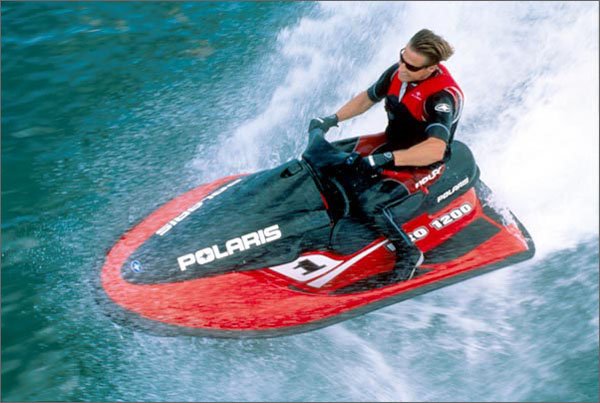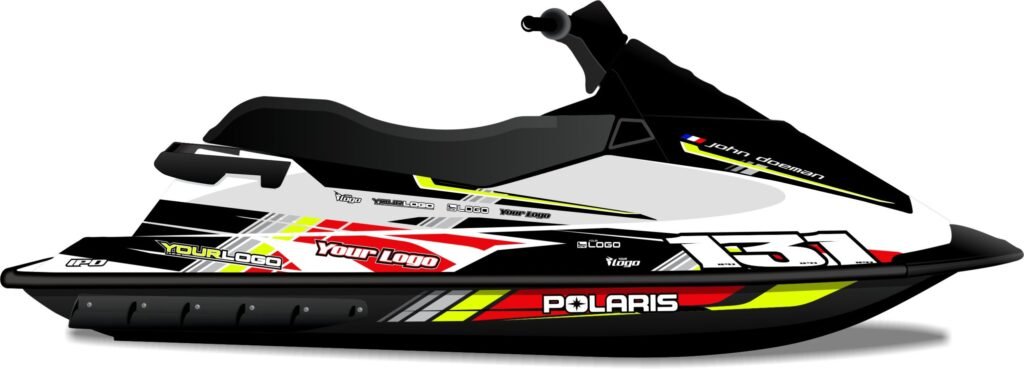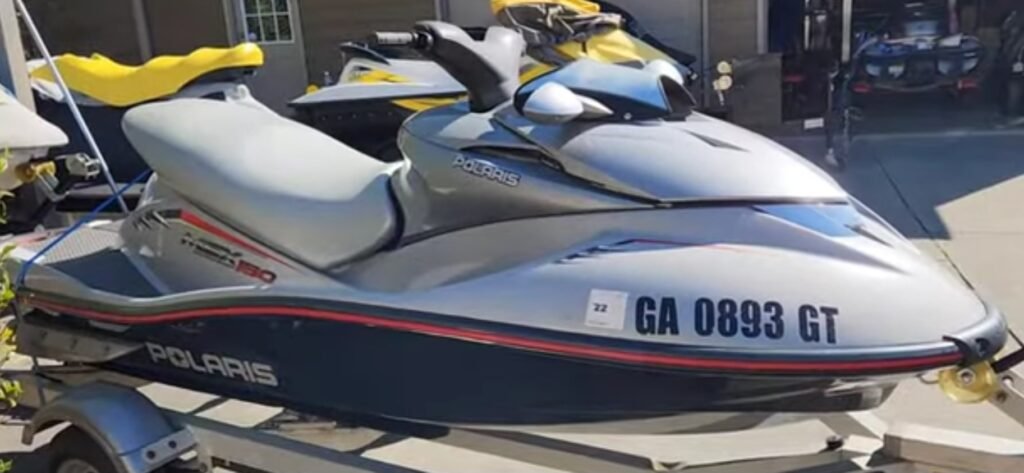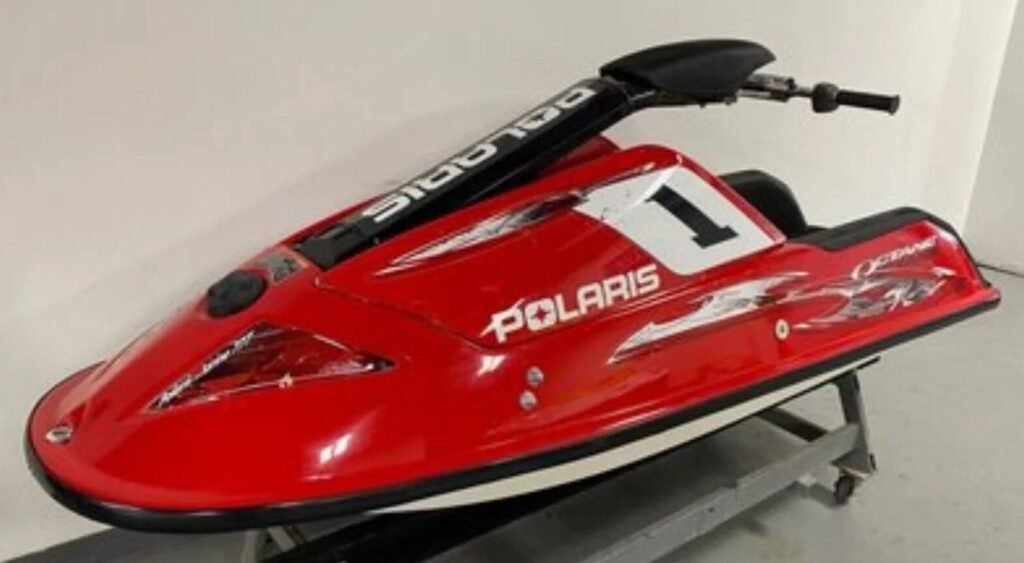This post may contain affiliate links, which means that I may make a small commission off items you purchase at no additional cost to you. Please see my terms of use page for details.
Are you curious about why Polaris decided to discontinue its jet ski production? Well, you’re not alone! This article delves into the reasons behind Polaris’ decision and provides detailed insights into the popular question of why they discontinued their jet ski production. From industry trends to customer opinions, we’ll explore various factors that led to this significant move. So get ready to uncover the story behind Polaris’ transition and gain a better understanding of their decision-making process.
What Led To The Termination Of Polaris Jet Ski Production?

This image is property of Boats.com.
Overview Of Polaris Jet Ski(Formerly Tigershark)
Evolution Of The Tigershark Brand
The Tigershark brand was initially established by Arctic Cat in the 1990s. Known for their innovative design and performance, Tigershark jet skis gained popularity among watercraft enthusiasts. The brand quickly became synonymous with reliability and cutting-edge features.
Acquisition By Polaris
In 1996, Polaris Industries, a renowned manufacturer of off-road vehicles, snowmobiles, and motorcycles, acquired the Tigershark brand. The acquisition aimed to expand Polaris’ product offerings and leverage the growing demand for personal watercraft. Polaris saw great potential in the Tigershark brand and sought to capitalize on it.
Rebranding As Polaris Jet Skis
Following the acquisition, Polaris rebranded the Tigershark jet skis as Polaris Jet Skis. This move aimed to unify the branding and align the personal watercraft with Polaris’ broader product range. Polaris Jet Skis continued to offer the same high-quality performance and features that were characteristic of the Tigershark brand.
History Of The Polaris Jet Ski
Early Jet Ski Development
The development of jet skis can be traced back to the late 1960s when the first vehicle of its kind was introduced. Over time, advancements in technology and engineering led to the creation of faster, more maneuverable, and efficient jet skis. Polaris entered the jet ski market with the acquisition of Tigershark, bringing their expertise in motorsports to the watercraft industry.
Introduction Of Tigershark Jet Skis
With the acquisition of the Tigershark brand, Polaris introduced their own line of jet skis. These models showcased the company’s commitment to innovation, performance, and reliability. Tigershark jet skis quickly gained a reputation for their powerful engines, sleek designs, and cutting-edge features.
Market Performance And Success
Polaris Jet Skis, formerly Tigershark, had a promising market performance and achieved a considerable level of success. Their commitment to providing high-quality products and exceptional performance earned them a loyal customer base. The competitive pricing and reliability of Polaris Jet Skis contributed to their popularity among watercraft enthusiasts.

This image property of IPD Jet Ski Graphics.
Polaris Jet Ski Models
Range Of Tigershark Models
Polaris Jet Skis offered a diverse range of models to cater to different needs and preferences of watercraft enthusiasts. The lineup included entry-level models suitable for beginners, mid-range models for recreational use, and high-performance models designed for speed and agility. Each model came with its own set of features and specifications to deliver a thrilling and enjoyable riding experience.
Notable Features And Innovations
Polaris Jet Skis were known for their innovative features that enhanced performance and safety. Some notable features included advanced hull designs for improved stability and maneuverability, powerful engines for exhilarating acceleration, and customizable ride settings. These features aimed to provide riders with the ultimate watercraft experience.
Popularity Among Jet Ski Enthusiasts
Polaris Jet Skis gained a significant following among jet ski enthusiasts. The combination of their reputation for reliability, performance, and competitive pricing made them a preferred choice in the market. Whether riders sought adrenaline-pumping speed or leisurely cruises, Polaris Jet Skis offered models to suit various riding styles and skill levels.
Reasons For Polaris Jet Ski Terminating Production
Declining Sales And Market Demand
One of the primary factors leading to Polaris terminating its jet ski production was declining sales and a decrease in overall market demand. Changing consumer preferences and a shift in recreational activities contributed to a decrease in jet ski sales. Factors such as affordability, storage requirements, and environmental concerns played a role in the decline of jet ski popularity.
Increased Competition From Other Manufacturers
The personal watercraft market became increasingly competitive, with brands like Yamaha, Sea-Doo, and Kawasaki dominating the market. These brands offered a wide range of models, catering to various budgets and preferences. The intense competition made it challenging for Polaris to maintain a significant market share, impacting their decision to discontinue jet ski production.
Shift In Polaris’ Business Strategy
As Polaris evaluated its product portfolio and future business strategy, it decided to prioritize other products that aligned more closely with its core competencies and market opportunities. This strategic shift aimed to allocate resources towards product lines that showed greater growth potential and profitability.
Economic Factors And Cost Considerations
Economic factors, such as rising production costs and increased regulation, also influenced Polaris’ decision to discontinue jet ski production. The costs associated with manufacturing, distribution, and marketing of jet skis became less favorable compared to other product lines. Polaris had to make strategic choices to optimize their business operations and ensure long-term profitability.
Market Trends And Competition
Dominance Of Yamaha, Sea-Doo, And Kawasaki
In the personal watercraft market, Yamaha, Sea-Doo, and Kawasaki emerged as dominant players. These brands consistently introduced new models, innovative features, and captured consumer attention. Their well-established presence and strong brand loyalty made it challenging for other manufacturers, including Polaris, to gain a significant market share.
Comparison Of Polaris With Competitors
When comparing Polaris with its competitors, factors such as reliability, performance, brand reputation, and pricing came into play. While Polaris Jet Skis offered competitive features and reliable performance, some consumers perceived other brands to have a higher level of reliability or better aftermarket support. These factors influenced consumer preferences and the overall market dynamics.
Customer Preferences And Brand Loyalty
Customer preferences in the personal watercraft market varied based on factors like riding style, budget, and brand loyalty. Some customers preferred the performance-oriented models offered by Yamaha or the customization options available with Sea-Doo. However, Polaris did have a loyal customer base that appreciated the unique features and design elements of their jet skis.

Impact Of Discontinuation On Polaris Jet Ski
Financial Implications
Discontinuing jet ski production had financial implications for Polaris. While jet skis were a part of their revenue stream, the decision to discontinue allowed Polaris to allocate resources towards other areas with greater growth potential. This reallocation aimed at strengthening the company’s financial position and improving overall profitability.
Company Restructuring And Resource Allocation
The discontinuation of jet ski production prompted Polaris to restructure its operations and resource allocation. The company focused on optimizing its manufacturing processes, supply chain management, and overall operational efficiency. This restructuring enabled Polaris to streamline its operations and adapt to changing market dynamics.
Strategic Focus On Other Product Lines
With the discontinuation of jet ski production, Polaris redirected its focus towards other product lines that showcased greater potential for growth and profitability. The company shifted resources and investment towards off-road vehicles, snowmobiles, and other powersports products. This strategic realignment allowed Polaris to expand its presence in these segments and capitalize on emerging market trends.
Customer Opinions And Reactions
Disappointment And Loss Of Options
The discontinuation of Polaris Jet Skis left some customers disappointed and longing for the options and features that were present in Polaris’ personal watercraft. Many individuals had developed a preference for Polaris’ innovative designs and features, and the discontinuation meant they had to explore alternative brands for their watercraft needs.
Satisfaction With Alternative Brands
Following the discontinuation, some customers expressed satisfaction with the alternative brands they chose. Yamaha, Sea-Doo, and Kawasaki were often cited as reliable and well-established brands that could fulfill their personal watercraft requirements. The diverse product offerings and strong brand loyalty associated with these brands brought reassurance and satisfaction to customers seeking new watercraft options.
Warranty And Support Concerns
For Polaris Jet Ski owners, the discontinuation raised concerns surrounding warranties and aftermarket support. Some customers wondered about the availability of spare parts and authorized service centers. Despite these concerns, Polaris assured its customers of continued support through the existing network of service centers and authorized dealerships.
Polaris’ Focus On Other Products
Off-Road Vehicles: ATVs And Side-By-Sides
With the discontinuation of jet ski production, Polaris redirected its resources towards their core product lines, such as off-road vehicles. Polaris is widely recognized for its range of all-terrain vehicles (ATVs) and side-by-sides. These vehicles offer versatility, power, and durability for various recreational and work purposes, catering to the ever-growing demands of off-road enthusiasts.
Snowmobiles And Other Powersports Products
Polaris has also strengthened its focus on snowmobiles, recognizing the market potential and demand for winter powersports. The company’s snowmobiles are renowned for their performance, innovative features, and ability to navigate diverse terrains. Additionally, Polaris continues to invest in other powersports products, such as motorcycles and electric vehicles, to expand its product portfolio.
Diversification Strategy And Market Expansion
By concentrating on off-road vehicles, snowmobiles, and other powersports products, Polaris embraced a diversification strategy. This approach aimed at reducing the company’s reliance on a single product category and expanding its presence in various markets. Polaris sought to capitalize on emerging trends and cater to a broader customer base, strengthening its overall market position.
Future Plans For Polaris Jet Ski?
Possibility Of Jet Ski Resurgence
While Polaris discontinued its jet ski production, the possibility of a jet ski resurgence in the market cannot be entirely ruled out. Consumer preferences and market demand are subject to change, and Polaris may reevaluate their decision based on future trends and opportunities. However, the focus on other product lines remains a priority for Polaris at present.
Potential Return Of Polaris To The Market
Although Polaris discontinued its jet ski production, it is essential to monitor market dynamics and consumer trends to understand the potential for their return. The company’s future decisions will likely depend on factors such as customer demand, technological advancements, and overall market conditions. Polaris may consider reentering the jet ski market if favorable circumstances arise.
Speculations And Industry Predictions
Given the ever-evolving nature of the personal watercraft industry, speculations and predictions about the future of Polaris in the jet ski market are abundant. Industry experts and watercraft enthusiasts provide diverse opinions on the matter. Some anticipate Polaris exploring new avenues of watercraft production, while others believe the company will stay focused on their existing product lines. Only time will reveal the path Polaris ultimately chooses to pursue.
Related Articles:
Are Yamaha Waverunners Reliable Jetskis?
How Fast Can A Jet Ski Go? Do You Prefer The Calm Rec. Ski Or The Intense Performance Ski?

